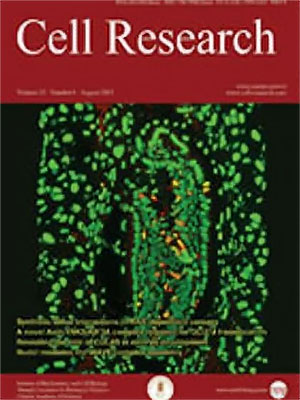Volume 9 Issue 4, December 1999: 261-269
ORIGINAL ARTICLES
NIH 3T3 cells malignantly transformed by mot-2 show inactivation and cytoplasmic sequestration of the p53 protein
WADHWA1 Renu, Syuichi TAKANO2, Youji MITSUI2, Sunil C KAUL2
1. Chugai Research Institute for Molecular Medicine, 153-2 Nagai, Niihari-Mura, Ibaraki 300-41, Japan
2. National Institute of Bioscience and Human-Techno
logy, AIST, 1-1 Higashi, Tsukuba, Ibaraki 305-8566, Japan
Correspondence:
In previous studies we have reported that a high level of expression of mot-2 protein results in malignant transformation of NIH 3T3 cells as analyzed by anchorage independent growth and nude mice assays [Kaul et al., Oncogene, 17, 907-11, 1998]. Mot-2 was found to interact with tumor suppressor protein p53. The transient overexpression of mot-2 was inhibitory to transcriptional activation function of p53 [Wadhwa et al., J. Biol. Chem., 273, 29586-91, 1998]. We demonstrate here that mot-2 transfected stable clone of NIH 3T3 that showed malignant properties indeed show inactivation of p53 function as assayed by exogenous p53 dependent reporter. The expression level of p53 in response to UV-irradiation was lower in NIH 3T3/mot-2 as compared to NIH 3T3 cells and also exhibited delay in reaching peak. Furthermore, upon serum starvation p53 was seen to translocate to the nucleus in NIH 3T3, but not in its mot-2 derivative. The data suggests that mot-2 mediated cytoplasmic sequestration and inactivation of p53 may operate, at least in part, for malignant phenotype of NIH 3T3/mot-2 cells.
FULL TEXT | PDF
Browse 2323


